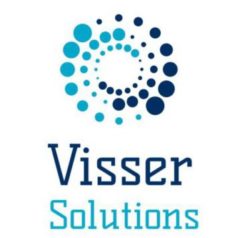As organizations have been dealing with with the difficult situation of managing with a reduced workforce over the past few years, the reality is that their compliance obligations have been building up – often to an extent that is currently unknown to the organization. Additionally, the expertise and skill set required to understand the compliance expectations, with the knowledge of how to interpret the rules and the ability to develop a plan of action to manage the obligation and the organizational program to ensure that the compliance requirement is continuously met going forward is in most instances, no longer with the organization. Compounding this problem is the fact that the existing resources remaining in the organization are too stretched to even begin dealing with the issue.
Regulators have continued their drive for strengthening regulations, creating new programs, and increasing consequences for non-compliance. Additionally, the requirement to sign off the declaration that all regulatory obligations and submit it to the various regulators is becoming more commonplace and is usually assigned to senior leadership. The consequences of non-compliance are becoming more severe and more public.
The foundation of all provincial regulators compliance requirements and expectations (currently the AER and BCOGC’s Self-Assessment program and Saskatchewan ECON) is the Canadian standard CSA Z662-15: Oil and Gas Pipeline Systems. CSA Z662 is the industry standard used by operators and regulators for the effective execution of a lifecycle compliance management system model for pipeline design, construction, operation and decommissioning.
Visser solutions is able to provide expertise in developing operational compliance solutions for the western Canadian upstream oil & gas market. The services and solutions described below provide a brief description of the nature of compliance activities that regulators are focused on today. The western regulators, as well as federal regulators are focused on similar things in the market today, as described by the following program elements.
Safety and Loss Management System Program Requirements
In Z662-15, Clause 3: “Safety and Loss Management Systems” defines the specific requirements and expectations for a Safety and Loss Management System (SLMS):
- Leadership: a policy and leadership commitment to a SLMS including defined management review;
- Roles and Responsibilities: organizational structure with clearly defined roles, responsibilities and authorities;
- Effective Resource Management: a process for the management of resources responsible for program execution, including:
- worker and vendor competency requirements,
- training programs,
- contractor selection, and
- contractor performance;
- Document Control: document and records management process;
- Procurement and Design: defined controls for design, material selection, supply chain and procurement;
- Construction: documented construction processes;
- Operational Controls: operations and maintenance programs, including:
- accurate licensing management
- operations and maintenance programs and supporting manuals and tools,
- integrity management program,
- risk assessment and management programs,
- engineering assessments, and
- emergency preparedness, response and recovery;
- Security: security program,
- Abandonment: decommissioning and abandonment processes;
- Change Management: effective management of change process; and
- Legal and Risk Registries: documenting and managing a registry of compliance and risk/ risk mitigation commitments;
- Continuous Improvement: continual improvement processes including establishing and managing to specified Goals, Objectives and Targets, performance monitoring, incident management, managing corrective actions, and audit programs.
In addition to CSA Z662 – Clause 3, regulators also make reference to using the following annexes as guidance: Annex A – Safety and Loss Management System, and Annex N – Guidelines for Pipeline Integrity Management Systems. These annexes provide comprehensive frameworks and additional requirements for the design and implementation of these management systems.
Regulators assessing the compliance status of your SLMS would perform their assessment as a comparison to the requirements, annexes and supporting guidance documentation defined in CSA-Z662.
The Visser Solutions Lifecycle Compliance Model for supporting our clients in attaining compliance to the regulatory requirements of any of the regulators would follow the following process:
1. Compliance Gap Assessment
- Standardized regulatory assessment protocol
- comprehensive compliance assessments: records, programs and license reviews
- Risk-prioritized field assessments
- assessment program results reporting
- corrective action lists with recommendations
2. Pipeline Compliance Program Elements Development
- Licensing: Pipeline asset licensing reviews and management solutions
- Operations and Maintenance program solutions
- Integrity Management Program solutions
- Risk Assessment program solutions
- Construction and Special Projects Program Solutions
- Training and competency program solutions: review, design, development and implementation
- Contractor and Vendor program solutions: vendor qualifications, selection, assurance, and performance assessments and reviews
- Documentation control, storage and access
3. Management System Development
- Conduct further Gap Assessment
- Develop fit-for-purpose Management System Elements based on organizational needs
- Develop a culture of Plan-Do-Check-Act for management support and performance reviews
- Develop Roles and Responsibilities programs for supporting the performance of the management system elements
- Develop Goals and Targets for the SLMS accross the organization
- Develop a Risk Assessment, Mitigation, and Management program
- Create, populate and develop monitoring processes for an internal Legal Registry
- Develop an appropriate Internal Audit/Assessment methodology for testing the performance of the Management System
- Develop a Corrective Action program for effectively managing changes
4. Safety and Loss Management System Self-Assessment
- Review and assign a Gap Assessment methodology
- Prepare the Self-assessment response in support of the organization
- Establish and confirm presence of all supporting documentation and materials for the Assessment.
5. SLMS Performance Audit
- Build the right Audit team of in-house and external experts
- Perform a structured assessment of the implementation status of the SLMS
- Assess the maturity of elements against the Goals and Targets of the organization
- Develop a performance dashboard to indicate compliance status
- Develop the final Audit Report for Management
